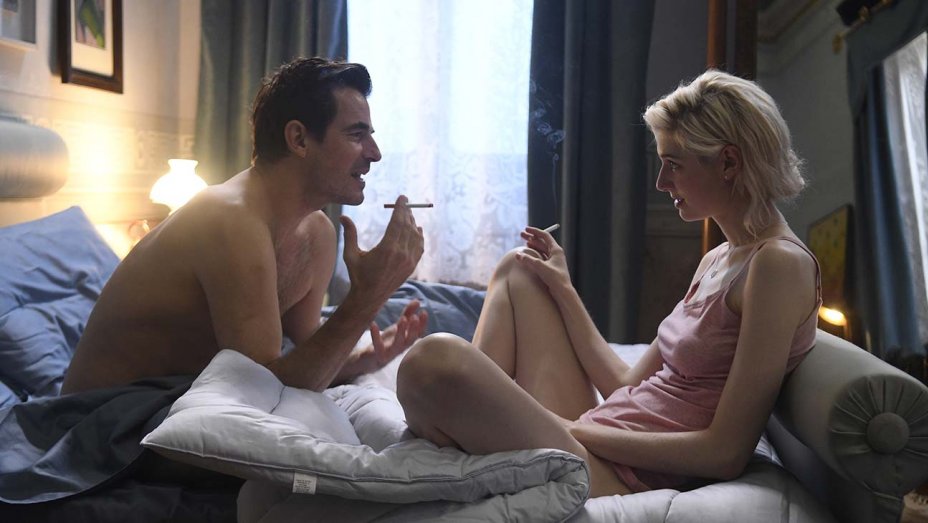Image description: A couple sits on a bed, facing each other, wearing sleep-wear. Both are smoking. The man leans forwards as he speaks to the women, appearing very intense. The woman is leaning back on the bed head, and listening.
By Jessica Rainford
It has commonly been suspected that the high-class, nepotistic art scene has always been plagued with deception and fraud – or so many films show us. In his new film, The Burnt Orange Heresy (an adaptation of Charles Willeford’s 1971 novel), Giuseppe Capotondi attempts to expose the lies sold by the complicit figures of this industry.
Set on the shores of Lake Como, art dealer Joseph Cassidy (Mick Jagger) seeks the work of a rather elusive artist, Jerome Debney (Donald Sutherland), whose art has not been glimpsed for years. This neo-noir artistic thriller is beautifully shot, presents noteworthy performances by a stellar cast, and is accessible for both art lovers and sceptics alike. However, to what extent is Capotondi successful in stripping away the glossy exterior of the art world?
The cast of The Burnt Orange Heresy includes Claes Bang, who stars as James Figueras, a sleek art critic with deceitful hidden motives. Known for his previous performance as a contemporary art curator in The Square (2017), Bang is a natural fit for this role, and slips into character with ease. However, unlike The Square, which satirically pokes at the absurdity of contemporary art, this new film looks at its darker underbelly, with Bang as the fitting antihero.
Elizabeth Debicki is charming as Berenice Hollis, Figueras’ waif-like lover who has almost as many secrets as him. In the first act, they ooze sophistication and witty dialogue, pretentious to the point that the aforementioned art sceptics will have their eyes rolling. And yet, the writing still seems to lack the depth needed to create truly interesting characters. Mick Jagger, easily the standout act, disappointedly did not have as much the screen time expected from such a noteworthy figure.
However, underneath the beauty and wit of these characters is a slight sense of self-awareness on the part of Capotondi, hinting at his attempt to lure you into this untouchable world – but it is not clear if this was intentional. The second act of this film takes a darker turn, and philosophical questions arise as to the role of critics in art, meaning, and even truth itself. Unfortunately for Capotondi, these questions remain vague and unanswered, and the inconsistencies in the plot are undeniable. Although it is an enjoyable watch, the film fails to peel back as many layers of complexity as one would hope.
At its worst, the plot is somewhat predictable, and what could have been interesting ideas about truth, lies, and art are left ambiguous and almost stripped of meaning. A number of intriguing motifs are also thrown at the audience far too blatantly, not giving credit to those with a good eye, and tilting a little too far towards becoming what the film itself mocks artistically – an attractive surface with little substance beneath.The pacing starts a little slow, but definitely improves as the plot progresses. The characters also lack the depth that one would hope for in this type of film.
Despite this, The Burnt Orange Heresy is a very visually appealing piece, with a dreamy, muted, Mediterranean colour palette which perfectly matches its tone, and alone makes this film pleasurable to watch.
Overall, the film paints an appealing portrait of a blemished industry, but with closer inspection, these brushstrokes are not so meaningful.
Three out of five stars.
Image courtesy of Venice Film Festival (via Hollywood Reporter)

